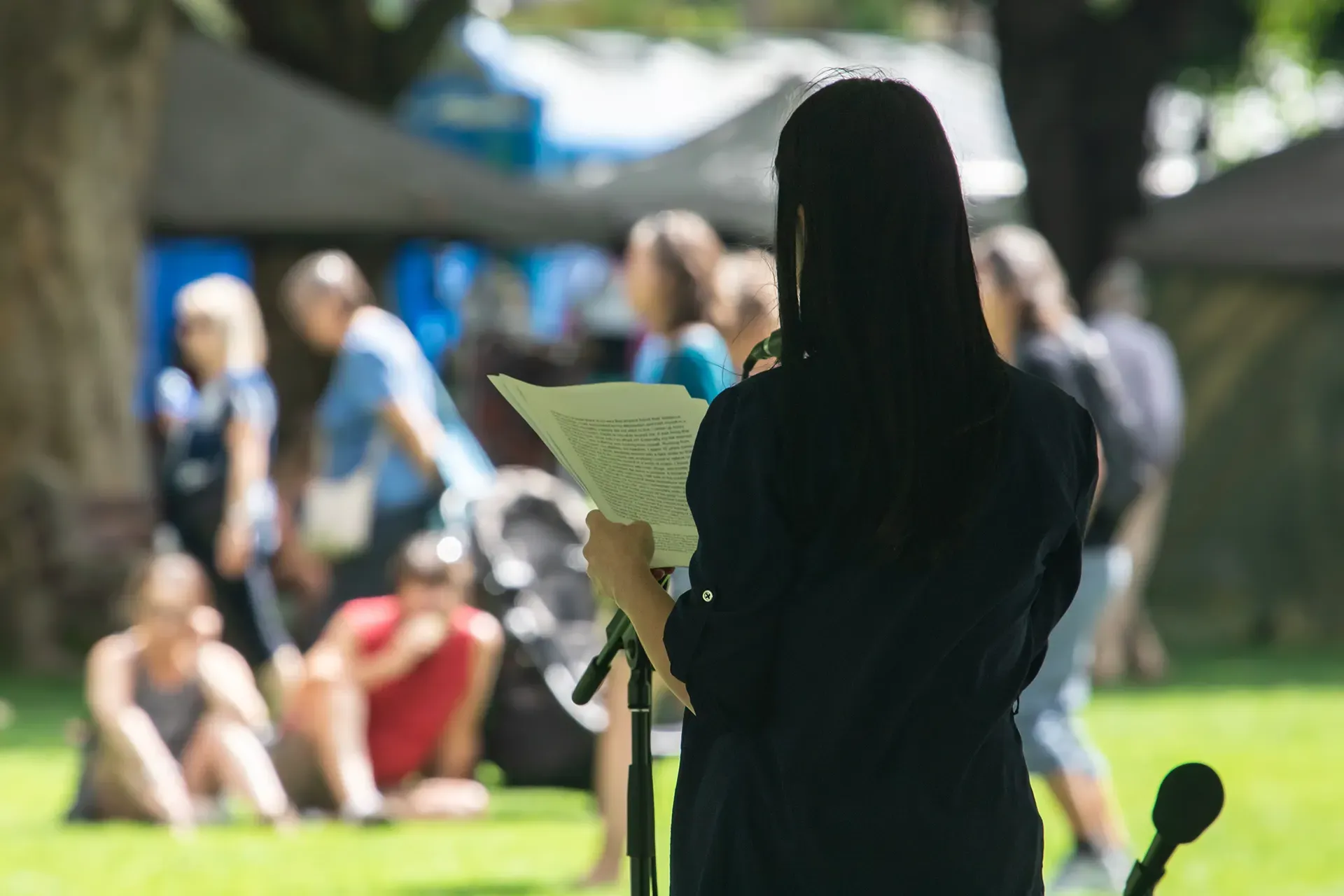Writing a Eulogy
A eulogy is a speech given in honor and remembrance of an individual who passed away. Eulogies are a common part of funeral or memorial services, and they are generally delivered by those who knew the deceased person well. You don’t need to be a professional writer to create a meaningful eulogy. What matters most is simply that you offer a heartfelt tribute.

Slide title
Write your caption hereButton
Style
The tone of a eulogy is generally conversational but varies based on the personalities of the people involved. Humor is often encouraged to provide some lighthearted relief, but it should always be kept respectful and sensitive to the situation. Overall, the style of the eulogy should suit the individual it is about.
Content
Typically, a eulogy emphasizes the defining characteristics of the deceased person, highlighting what made them special and what loved ones will remember the most about them. Some people choose to focus the eulogy mostly on their own perspective and personal relationship with the individual, but others prefer to incorporate stories and input from several different friends and family members.
It might be helpful to begin by talking with others and sharing tales about the person so that you can start a list of possible content. Try to determine what theme emerges from the stories and connects all of the details together, such as how adventurous the person was or how their life was guided by a strong faith. This will help you determine which details you want to include and can also help you transition between those details. Once you have decided the theme and narrowed down your list, you can outline how you want to organize the content and then begin writing the eulogy.
Structure
Make sure you first introduce yourself and explain your relationship to the deceased person. Then, starting with a story is always a great way to engage the audience and immediately illustrate the personality of the individual who passed. After that, you might want to describe some of the person’s most significant life moments and offer a bit of reflection on what impact they have had on those around them. Including several anecdotes throughout the eulogy helps the audience feel a sense of community while fondly reminiscing. The end of a eulogy often acknowledges and thanks those who have helped care for the individual or who were an important part of their life. Consider closing with a direct address to the one who passed or with a favorite saying of theirs.
A popular guideline is to keep the eulogy around five to seven minutes long. Once you have a first draft written, practice delivering it a few times and have someone else listen. This will help you think of details that might need to be added and also notice areas that should be revised or cut.
Pedersen Funeral & Cremation Service | 101 Atlantic Ave, Morris, MN 56267 | Phone: 320-589-3220
Starbuck Funeral Home | 106 W 4th St, Starbuck, MN 56381 | Phone: 320-239-2343
Quick Links

A Year of Grief Support
Sign up for one year of weekly grief messages designed to provide strength and comfort during this challenging time.
Please wait
Verifying your email address
Please wait
Unsubscribing your email address
You have been unsubscribed
You will no longer receive messages from our email mailing list.
You have been subscribed
Your email address has successfully been added to our mailing list.
Something went wrong
There was an error verifying your email address. Please try again later, or re-subscribe.
© Pedersen Funeral & Cremation Service. All Rights Reserved.
© Pedersen Funeral & Cremation Service. All Rights Reserved.



